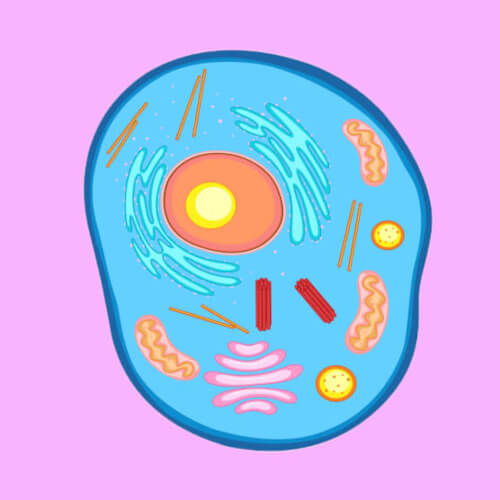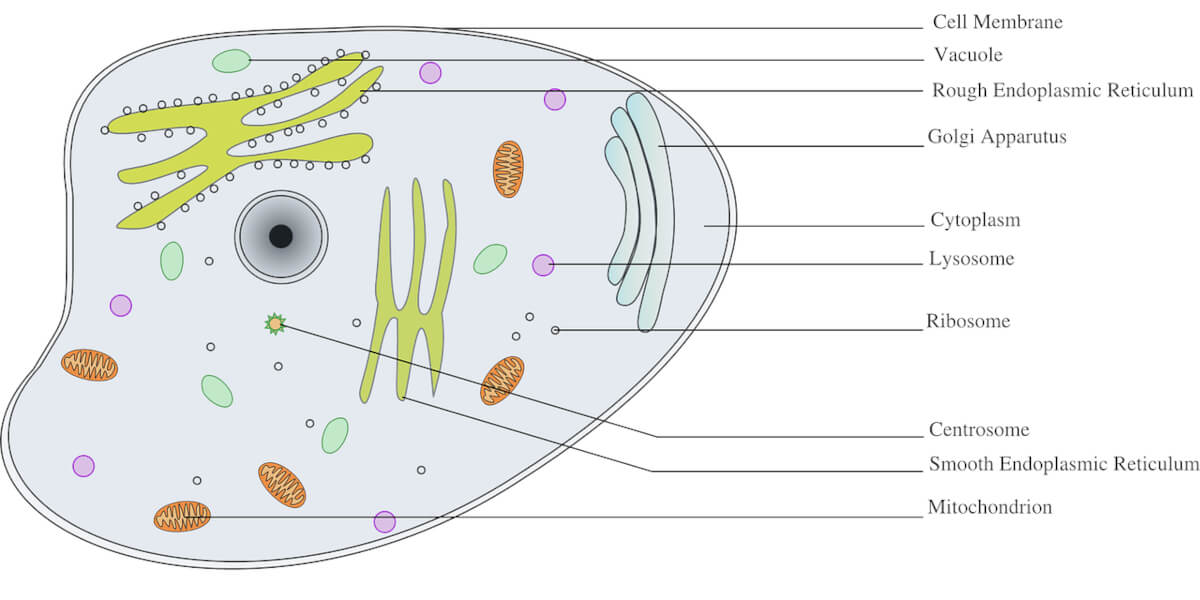


An animal cell is the basic unit of life that makes up the tissues and organs of all animals, including humans. Animal cells are eukaryotic cells, meaning that they have a nucleus containing genetic material in the form of DNA.
The nucleus and other components of the cell, called organelles, are surrounded by a flexible cell membrane that acts as a protective barrier. Unlike plant cells, animal cells do not have a rigid cell wall and instead have something called a cytoskeleton, which provides structure and helps the cells change shape and move around.
Biologists split animal cells into different components, or parts, called organelles, meaning "little organs." Here is a list of the main organelles in animal cells:

Scientists call this ability "cellular motility," and it is important for cells like white blood cells, which need to move through the body to fight infections. To do this, these cells can extend long, finger-like projections called pseudopodia in the direction they want to move. The pseudopodia can then grip onto nearby surfaces, allowing the cell to pull itself forward.
This process is not limited to white blood cells, however—other types of animal cells are also able to change their shape and move around in this way, including muscle cells and some types of cancer cells. This ability is important for many important processes in the body, such as wound healing, embryonic development, and immune responses.
In order to carry out their activities, animal cells convert nutrients such as glucose and oxygen (O2) into energy that the cell can use to power its activities. This process is known as "cellular respiration," and it takes place in tiny structures within the cell called mitochondria.
What makes this process particularly cool is that it is similar to what happens when fire burns. In cellular respiration, glucose and oxygen are "burned" in a series of chemical reactions to release energy in the form of a molecule known as ATP.
These cells are split up into different types, each with their own structures and purpose. Some of these different types of cell include red blood cells, white blood cells, neurons, skin cells, muscle cells, connective tissue cells, and stem cells.
During the earlier stages of their development, red blood cells have both a nucleus and DNA. However, as they mature, or grow older, the nucleus disappears as well as the DNA. Having no nucleus allows the red blood cell to have a unique shape and flexibility that is important for its function in transporting oxygen (O2) throughout the body.
After Robert Hook discovered cells in 1665, it took over 100 years for scientists to realize how similar animal and plant cells were. This is because plant cells, with their thick outer cell walls, were easy to identify. Animal cells, on the other hand, which do not have cell walls, were much more difficult for biologists at the time observe through their simple, early microscopes.